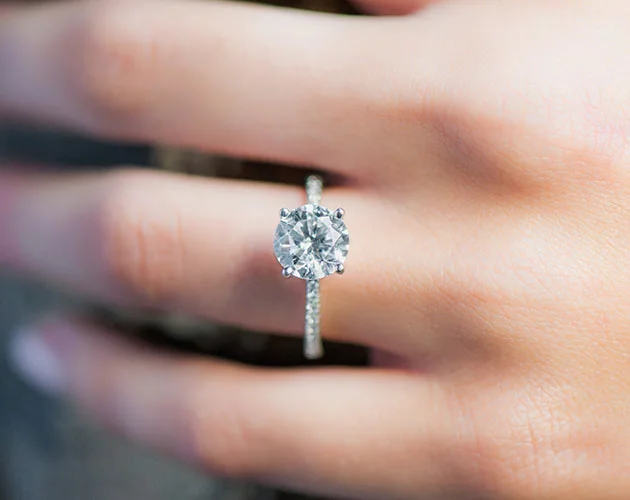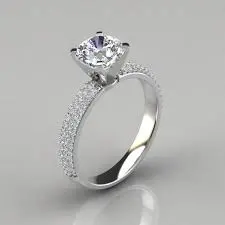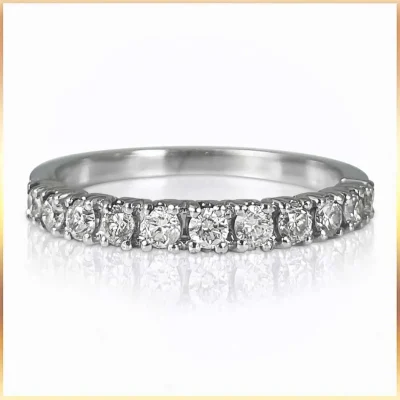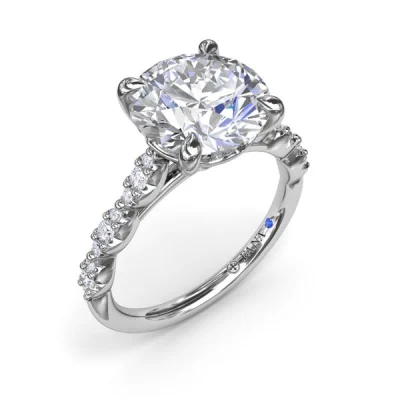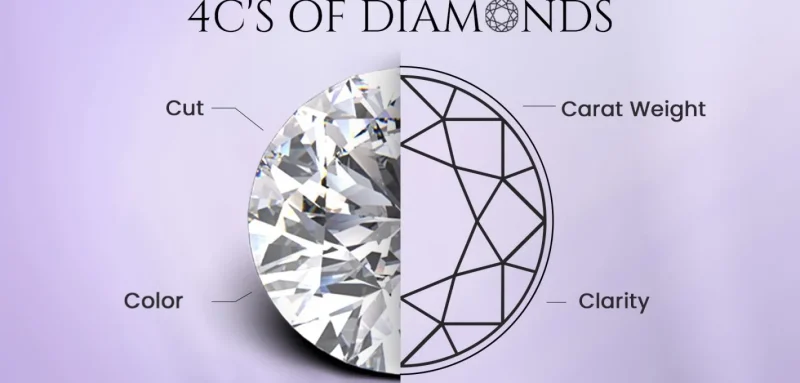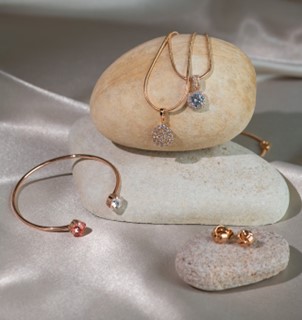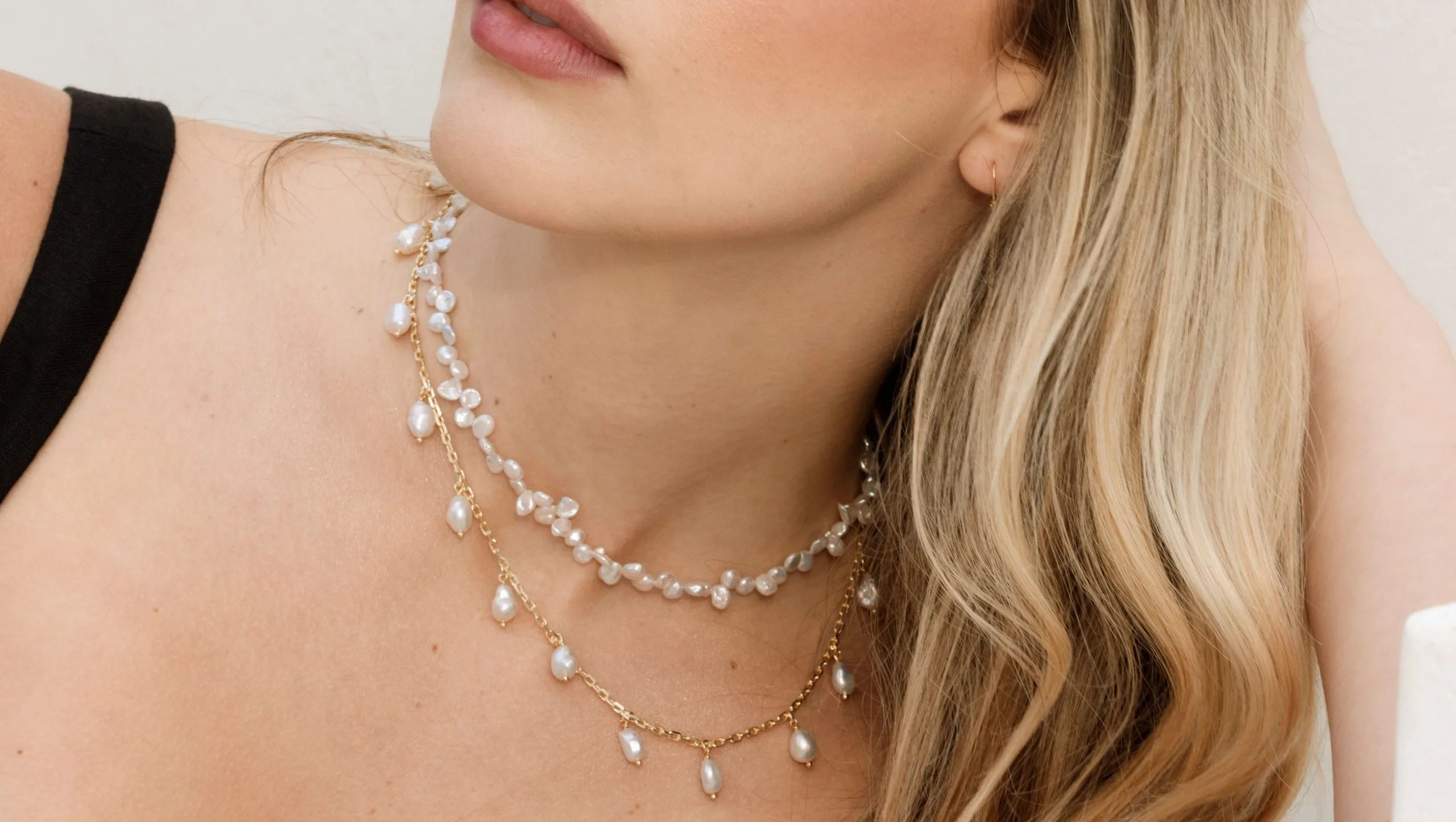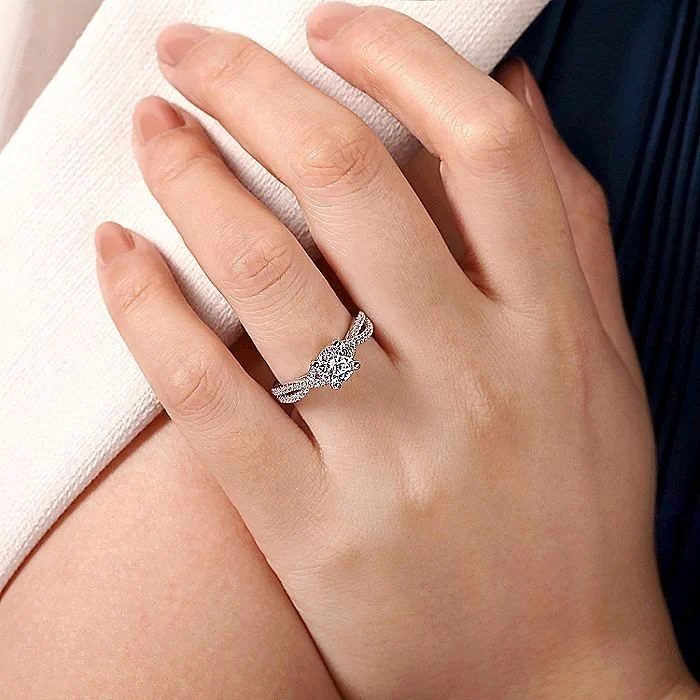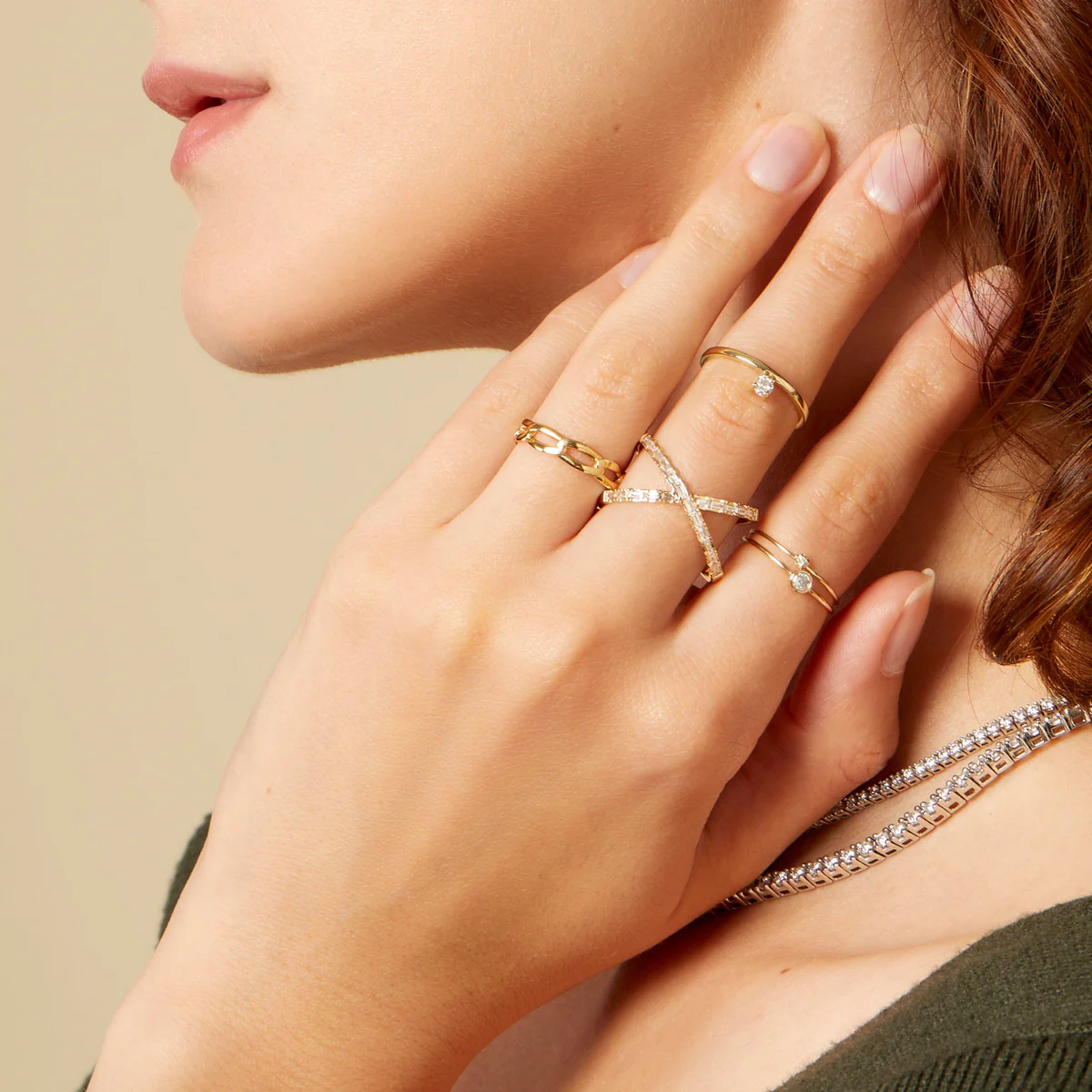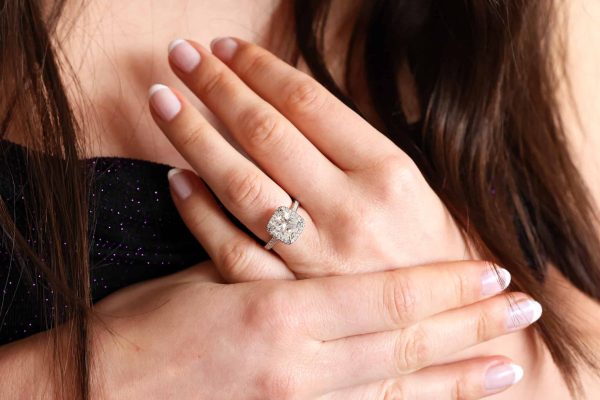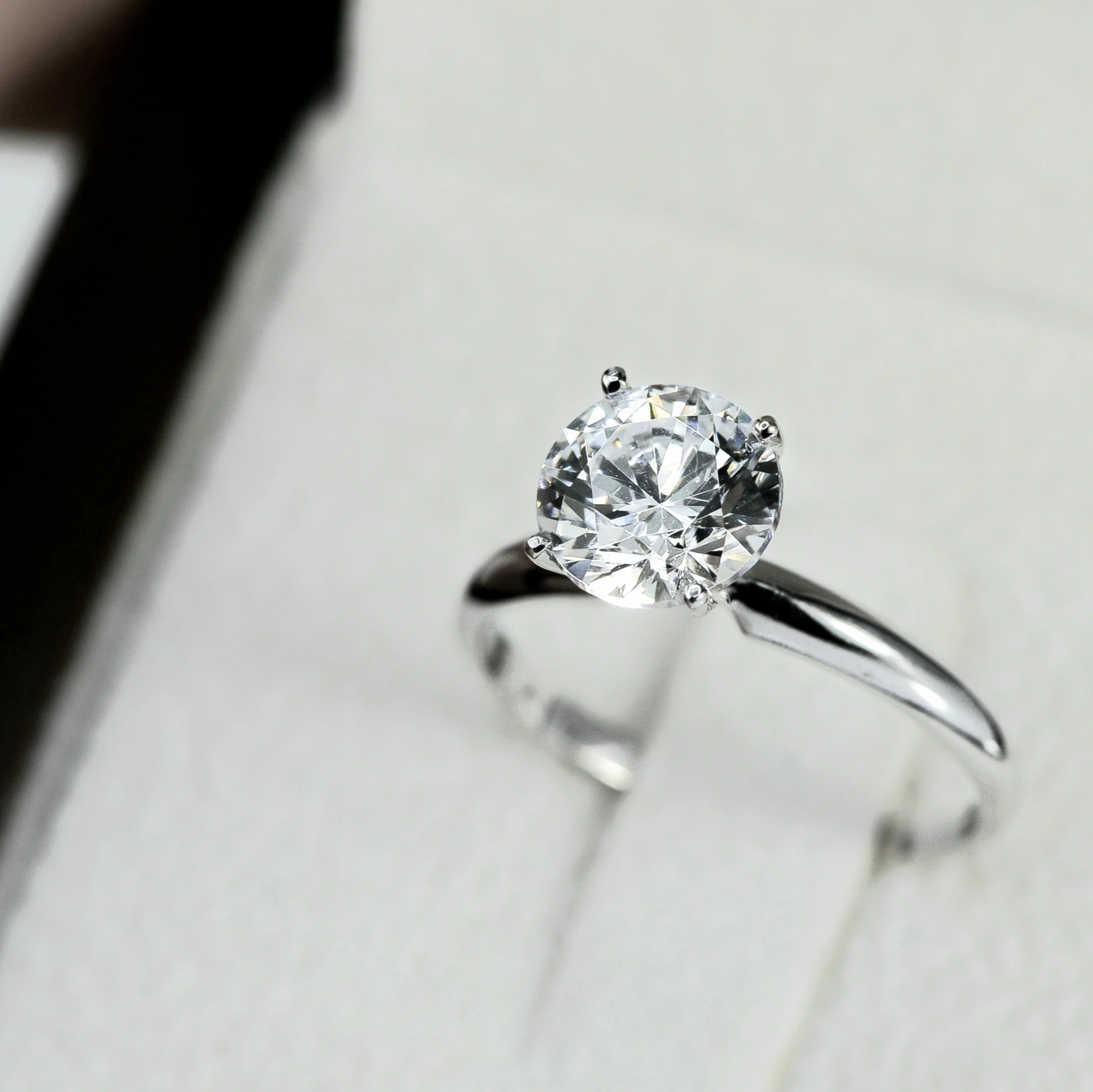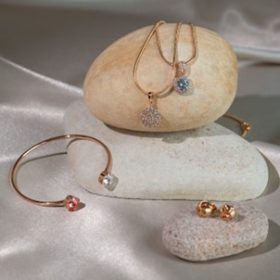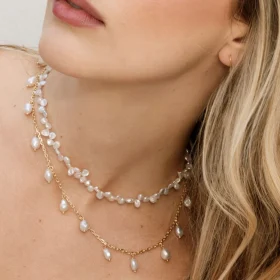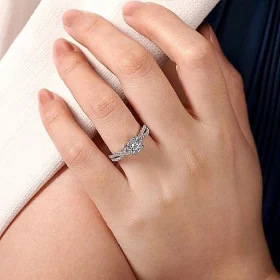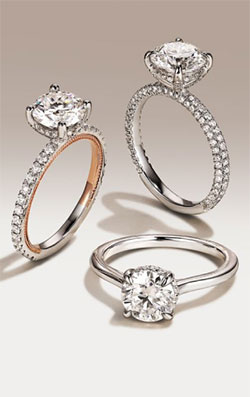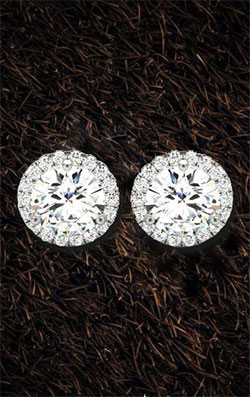When it’s about engagement rings, people have varying preferences.
But the majority agree that engagement rings are nothing without a bit of a sparkle.
Shiny rings speak so much without the wearer saying a word; the sparkling gemstone does all the talking.
If you’re also a fan of shimmery engagement rings, consider one with a pavé setting.
Featuring numerous small diamonds to enhance the ring’s appearance, a pave ring adds sparkle to your finger without making it look ostentatious.
A pavé engagement ring has many features and variations, and knowing both can help you make the right decision.
In today’s guide, we’ll provide the knowledge you need to choose the perfect pave engagement ring.
What Is a Pavé Ring?
A pavé (pronounced pah-vey) ring is embellished with single or multiple rows of petite gemstones. The name is given to the setting due to its similar appearance to a paved road.
The History of Pavé Rings
The pavé setting’s origins date back to the 18th century. Setting the diamonds so close to each other quickly became popular then.
The technique was widely appreciated because it enhanced the shine of jewelry by maximizing the surface area covered by diamonds.
Initially, pavé settings were reserved for jewelry worn by the elite and royalty. However, in the following centuries, jewelry-making techniques advanced, making pavé settings accessible to everyone, including the general public.
Pavé setting expanded from rings to bracelets, necklaces, and earrings.
Fast-forward to the 20th century, pavé settings became especially popular for engagement rings. Since their appearance enhances the ring’s overall brilliance and sparkle, they hold a special place in the hearts of brides-to-be.
Types of Pavé Settings
We mentioned in the beginning that pavé setting is available in multiple engagement ring styles, and they suit every stone cut, be it emerald, oval, or cushion. Here, we discuss the different types of pavé settings:
· Micro Pavé
As the name suggests, the micro pavé setting uses tiny diamonds, often less than 0.01 carat each. Tiny prongs or beads encircle the diamonds, which are nearly impossible to see with the naked eye. Due to the pavé setting’s intricate appearance, it’s primarily used in high-end and luxurious jewelry.
· French Pavé
In this setting, the metal is cut away underneath each diamond, creating a V-shaped appearance. This technique allows more light to enter the stones from below, enhancing the diamonds’ sparkle and maximizing light reflection. The diamonds in this setting are typically larger than those in micro pavé settings.
· Petite Pavé
The petite pavé and micro pavé settings might sound similar, and to some extent, they are. However, the significant difference is that the diamonds and the prongs that hold them are slightly larger and visible in the petite pavé setting. This unique setting helps the ring maintain a sturdy structure while offering plenty of sparkle.
Pros and Cons of Pavé Engagement Rings
· Pros of Pavé Engagement Rings
- Enhanced Brilliance: One of the most popular reasons for choosing a pavé engagement ring is enhanced brilliance. By covering more surface area with smaller rings, a pavé engagement ring maximizes the sparkle.
- Luxurious Appearance: While the pavé setting doesn’t necessarily mean the piece will be high-end, the appearance may convince you to think it is. And the credit goes to the intricate arrangement of the diamonds.
- Versatile Options: If you have a unique idea for an engagement ring and want pavé-set diamonds, a pavé engagement ring would be enough. It’s versatile enough to fit many diamond shapes and design styles without taking the attention away from the central stone.
· Cons of Pavé Engagement Rings
- Costly Option: Pavé engagement rings feature one or more rows of diamonds across the band. Because of this, the price of a pavé engagement ring will be higher than a traditional ring.
- No Resizing: Before purchasing a pavé engagement ring, make sure the size is perfect to the t. Most, if not all, pavé engagement rings cannot be resized.
- High Maintenance: Pavé engagement rings are challenging to clean due to the multiple diamond rows. The smaller diamonds make it difficult to remove the dirt and debris between them properly.
What to Look for Before Purchasing a Pavé Engagement Ring
Purchasing an engagement ring is tough as it is. But if you’re considering a pavé engagement ring, you have even more work cut out for you. Therefore, you must pay special attention to certain factors, namely:
- The Four Cs
When buying any ring, especially a pavé engagement ring, it’s important to consider the four Cs: Cut, Color, Clarity, and Carat. Here’s a simple breakdown:
- Cut: Look for a cut that’s excellent or very good.
- Color: Aim for a color grade between D and H.
- Clarity: The diamond should be clear enough to look clean to the naked eye.
- Carat: Choose the carat size based on your budget and personal preference.
- Metal Type
The next to consider is the ring’s metal type. For that, you’ll need to take into account your lifestyle. 18k gold is a popular choice because of its durability. However, if you have metal allergies, look for hypoallergenic metals like platinum, rhodium, silver, or palladium.
- Setting Style
As we’ve already mentioned, there is more than one type of pavé setting. So, choose the one you like the most: French, micro, or petite. They offer varying levels of sparkle and security. While we’re at it, also consider the width of the band. A wider band helps the ring appear more substantial, while a thin width makes it look delicate.
Concluding Thoughts
Pavé engagement rings, with their sparkling rows of diamonds and delicate designs, enchant onlookers and wearers alike. This makes them the perfect option if you’re hunting for an engagement ring.
Remember to consider your budget, lifestyle, and other factors before deciding.
At Fine Jewelry and Gemstones, we offer a comprehensive collection of engagement rings, including pavé-set options, that will sweep you off your feet.
Frequently Asked Questions
A pavé engagement ring features a partial or full band of small diamonds set closely together, creating a look similar to a paved street and a center diamond. In contrast, a solitaire engagement ring highlights just the center diamond, without additional stones on the band.
Popular pavé engagement ring styles include French pavé, micro pavé, and petite pavé. Each adds a touch of elegance and sophistication to your finger, capturing everyone’s attention.
Platinum, white gold, yellow gold, and rose gold are some of the most popular metals for pavé engagement rings. Irrespective of the one you choose, it’s sure to take the beauty of the pavé setting up a notch.





